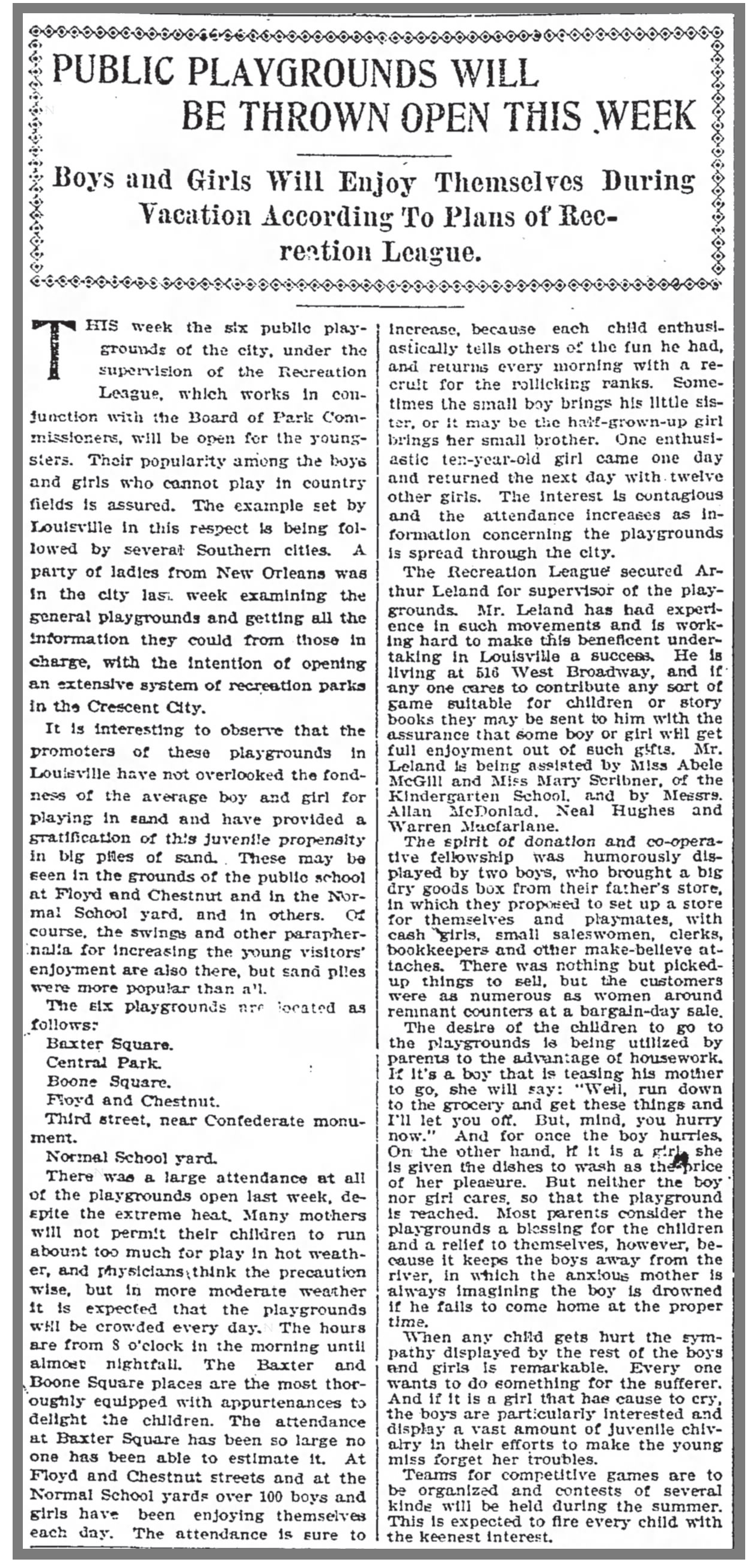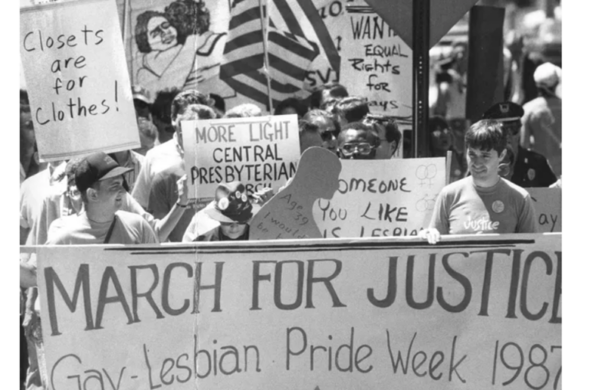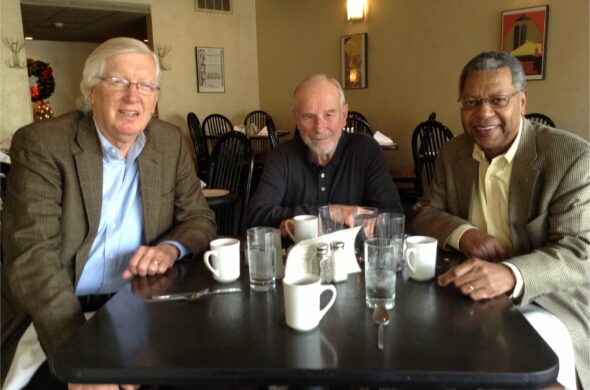When Frederick Law Olmsted came to Louisville designed the first three flagship parks (Cherokee in the East, Iroquois in the South, and Shawnee in the West) in Louisville’s Olmsted Park system in 1891, he didn’t design any areas specifically for playgrounds. But why?
The playground movement was just beginning as Olmsted entered his retirement in 1895. Starting in the late 1890s, cities started adding basic playground equipment to parks — like swing sets, see saws, sandboxes and shallow pools.
According to this Courier Journal article, Louisville’s first public playgrounds opened in July 1901, with three in our Olmsted Parks: Baxter Square, Boone Square and Central.
“The Baxter and Boone Square places are the most thoroughly equipped with appurtenances to delight the children. The attendance at Baxter Square has been so large no one has been able to estimate it.” The article reads.
It wasn’t until 1904 when organized efforts across the country started to help ban the employment of young children – giving young working-class children more leisure time. Playgrounds quickly became popular because they did keep children safer, reduced delinquency and helped keep their children safe.
️ And while Frederick Law Olmsted Sr. didn’t design any playgrounds in the flagship Olmsted Parks, his sons, who took over the business, were big advocates for the playground movement and included them in many designs right here in Louisville.

Fast forward nearly 120 years…
Today Olmsted Parks Conservancy helps fund park projects including adding, replacing, and enhancing playgrounds in our Olmsted Parks to give ALL children the opportunity to learn, explore, and connect while getting some fresh air. This summer our Team for Healthy Parks has been working hard to build a natural play area in Tyler Park.
While we don’t have a date on when our playgrounds will reopen due to the pandemic from the Governor, if you’re looking for kid-approved activities, take the advice from this article – and let them play in a big pile of sand in your backyard.
Find something similar: History Highlight











